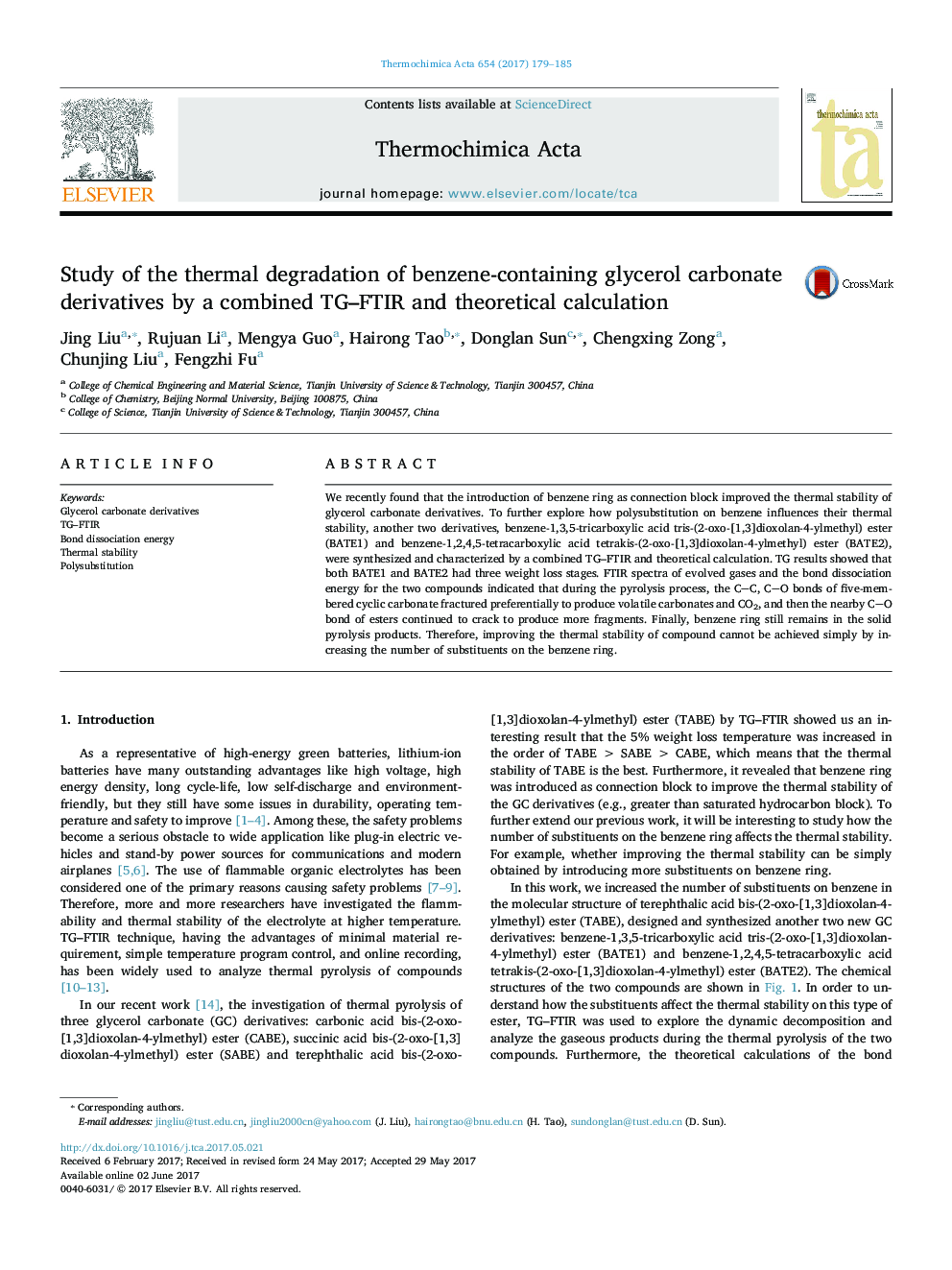| Article ID | Journal | Published Year | Pages | File Type |
|---|---|---|---|---|
| 4995953 | Thermochimica Acta | 2017 | 7 Pages |
Abstract
We recently found that the introduction of benzene ring as connection block improved the thermal stability of glycerol carbonate derivatives. To further explore how polysubstitution on benzene influences their thermal stability, another two derivatives, benzene-1,3,5-tricarboxylic acid tris-(2-oxo-[1,3]dioxolan-4-ylmethyl) ester (BATE1) and benzene-1,2,4,5-tetracarboxylic acid tetrakis-(2-oxo-[1,3]dioxolan-4-ylmethyl) ester (BATE2), were synthesized and characterized by a combined TG-FTIR and theoretical calculation. TG results showed that both BATE1 and BATE2 had three weight loss stages. FTIR spectra of evolved gases and the bond dissociation energy for the two compounds indicated that during the pyrolysis process, the CC, CO bonds of five-membered cyclic carbonate fractured preferentially to produce volatile carbonates and CO2, and then the nearby CO bond of esters continued to crack to produce more fragments. Finally, benzene ring still remains in the solid pyrolysis products. Therefore, improving the thermal stability of compound cannot be achieved simply by increasing the number of substituents on the benzene ring.
Related Topics
Physical Sciences and Engineering
Chemical Engineering
Fluid Flow and Transfer Processes
Authors
Jing Liu, Rujuan Li, Mengya Guo, Hairong Tao, Donglan Sun, Chengxing Zong, Chunjing Liu, Fengzhi Fu,
